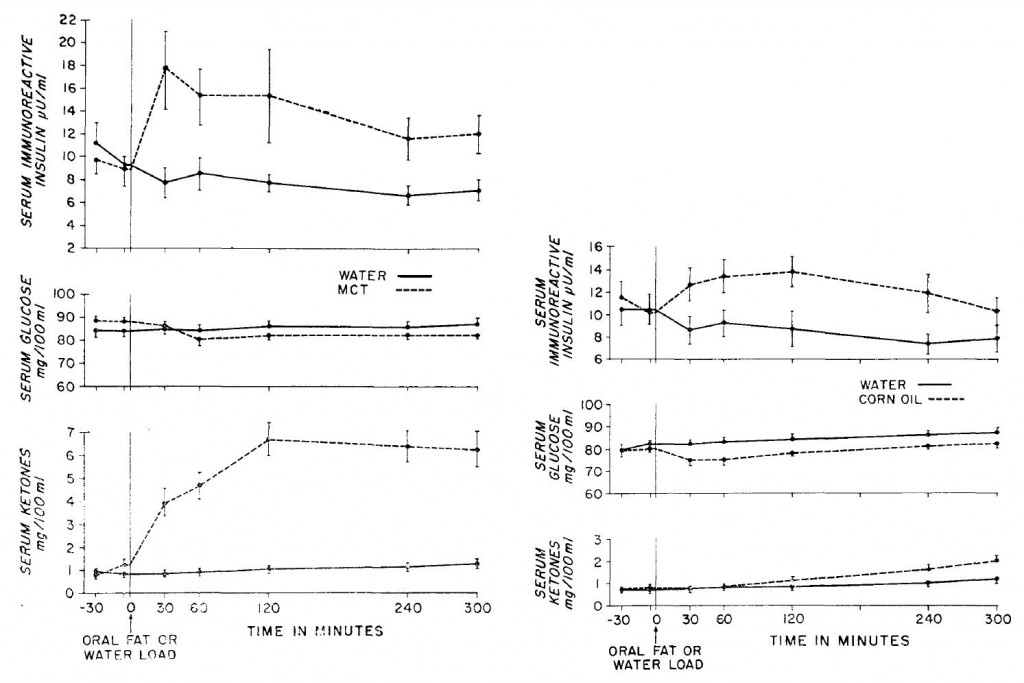A randomized pilot trial of a moderate carbohydrate diet compared to a very low carbohydrate diet in overweight or obese individuals with type 2 diabetes mellitus or prediabetes (Saslow et al., 2014)
Disclaimer: this study was not ground-breaking; it was confirmation of a phenomenon that is starting to become well-known, and soon to be the status quo. That is, advising an obese diabetic patient to reduce their carb intake consistently produces better results than advising them to follow a low fat, calorie restricted diet.
The two diets:
Moderate carbohydrate diet : 45-50% carbs; 45 grams per meal + three 15 gram snacks = 165 grams per day; low fat, calorie restricted (500 Calorie deficit). Otherwise known as a “low fat diet (LFD).”
: 45-50% carbs; 45 grams per meal + three 15 gram snacks = 165 grams per day; low fat, calorie restricted (500 Calorie deficit). Otherwise known as a “low fat diet (LFD).”
In their words: “Active Comparator: American Diabetes Association Diet. Participants in the American Diabetes Association (ADA) diet group will receive standard ADA advice. The diet includes high-fiber foods (such as vegetables, fruits, whole grains, and legumes), low-fat dairy products, fresh fish, and foods low in saturated fat.”
Very low carbohydrate diet : Ketogenic; <50 grams of carb per day, no calorie restriction, just a goal of blood ketones 0.5 – 3 mM.
: Ketogenic; <50 grams of carb per day, no calorie restriction, just a goal of blood ketones 0.5 – 3 mM.
In their words: “Experimental: Low Carbohydrate Diet. Participants will be instructed to follow a low carbohydrate diet: carbohydrate intake 10-50 grams a day not including fiber. Foods permitted include: meats, poultry, fish, eggs, cheese, cream, some nuts and seeds, green leafy vegetables, and most other non-starchy vegetables. Because most individuals self-limit caloric intake, no calorie restriction will be recommended.”
Both groups were advised to maintain their usual protein intake.
Continue reading →
Posted in Advanced nutrition, diet, Dietary fat, fat, insulin, Ketosis, muscle, Protein, TPMC
Tagged Atkins, body composition, calories, calories proper, carbs, diet, energy balance, energy expenditure, fat, insulin, ketogenic, ketosis, muscle, nutrition, obesity, protein


